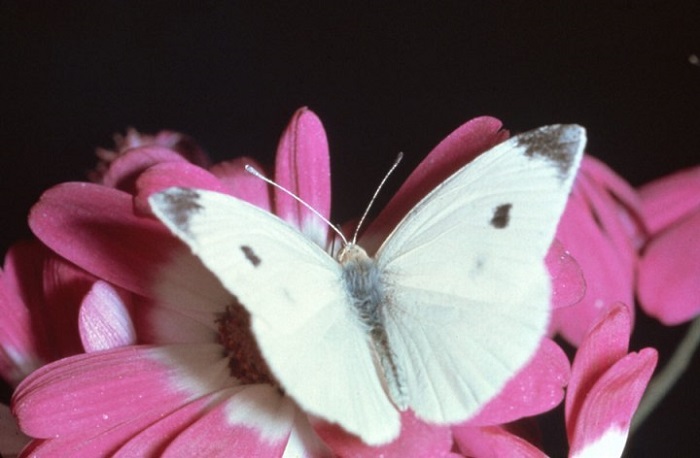Researchers from the University of Exeter believe they’ve found a cheaper, more efficient method for harnessing the power of the sun, and they made this discovery after studying the posture and wing design of Cabbage White butterflies.

What they found is that by mimicking the v-shaped posture that this class of butterfly uses to heat up their flight muscles before taking flight, the amount of power produced by solar panels increases by nearly 50%.
Furthermore, by replicating the butterfly’s wing-like structure, the power-to-weight ratio of the entire solar energy structure is increased 17-fold, making it significantly more efficient.
“Biomimicry in engineering is not new,” said Professor Tapas Mallick, lead author of the research. “However, this truly multidisciplinary research shows pathways to develop low cost solar power that have not been done before.”
The reason why the Cabbage White butterflies like to warm-up their wings before take-off is because they typically take flight before other butterflies on cloudy days which, obviously limits the extent to which their flying muscles can be warmed up.
The efficiency with which they warm up their wings is believed to be due to the butterfly’s v-shaped posturing, referred to as reflectance basking. Such a stance, if you will, allows it to maximize the concentration of solar energy on their thorax, which allows for flight.
Additionally, sub-structures on the butterfly’s wings allow the light from the sun to be reflected more efficiently, further ensuring the flight muscles are warmed to an optimal temperature as fast as possible.
Understanding all of this, the team began investing how best to replicate these wings for the purpose of developing new, lightweight reflective material that could be used for the purpose of producing electricity from solar energy.
The found that the optimal angle by which the butterfly should hold its wings to increase temperature to its body was roughly 17 degrees; this position increased the temperature by 7.3 degrees Centigrade when compared to the wings being flat.
Also, they were able to show that by replicating the mono-layer of scale cells found in the butterfly wings in solar energy producers, they were able to improve the technology’s power-to-weight ratios of future solar concentrators.
“This proves that the lowly Cabbage White is not just a pest of your cabbages but actually an insect that is an expert at harvesting solar energy,” said Professor Richard ffrench-Constant, who conducts world-leading research into butterfly mimicry at the University.
The group’s paper, entitled “White butterflies as solar photovoltaic concentrators” is available online.
Via EurekAlert!
Advertisement
Learn more about Electronic Products Magazine





